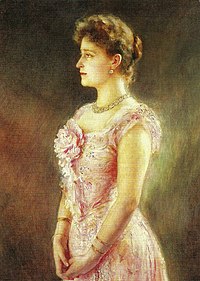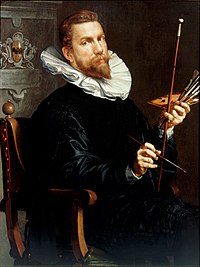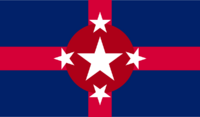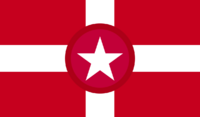New Aspen
This article is incomplete because it is pending further input from participants, or it is a work-in-progress by one author. Please comment on this article's talk page to share your input, comments and questions. Note: To contribute to this article, you may need to seek help from the author(s) of this page. |
The Federal Republic of New Aspen Federalnia Respubika Novyi Aspen (Aspenian) | |
|---|---|
| Motto: "Unitya, Sloboda, Roziyvoj" | |
National animal Silver-crested Owl | |
| Capital and largest city | United Boreas |
| Official languages | Aspenian |
| Recognised national languages | Anglish |
| Demonym(s) | Aspenians |
| Government | Federal parliamentary representative democracy |
| Gloria Halsey | |
| Edward Lloyd | |
| Legislature | Aspensky Parljament Aspenian Parliament |
| Currency | Aspenian Conifer (ACO (₡o)) |
| Date format | dd/mm/yyyy |
| Driving side | right |
| Calling code | +554 |
| ISO 3166 code | AS |
| Internet TLD | .as |
The Federal Republic of New Aspen, commonly referred to simply as New Aspen, is a land-locekd nation located in the northern hemisphere of the Eurth. Due to New Aspen entering the international comunity only recently, it's borders remain somewhat unclear, and several diplomats at the World Congress are currently working on drafting a new map for the country.
New Aspen is a federal republic, consisting of 8 federated states, organised as a representative parliamentary democracy. Citizens elect their represesntatives to the bicameral Aspenian Parliament. The head of state is the directly elected Federal Chancellor, while the head of government is the Prime Minister, chosen by the parliament. The Federal government is fairly large, regulating many aspects of the nation's market economy.
Formerly known as the Kingdom of Aspenia, New Aspen has suffered trough a bloody internal conflict, which nearly destroyed the nation. While the civilian population was mostly spared, the governmental structure suffered a heavy blow. While the new nation has a fairly large population, it struggles to pull itself out of economic recession and therefore has a relatively low GDP. The new Federal government is facing high internal tensions, growing unemployment and a poor economic outlook.
History
Ancient Ages
While archaeological records suggest that the territory of present-day New Aspen has been indabited by various tribes in the Prehistoric and Ancient eras, the first organised societies began forming only as late as the early Medieval era. Various settlers arrived around the 7th century, bringing with them the technological advancements of the era, and began founding their own noble clans and princely states, either trough subjugation or integration of the existing population. The origins of the Aspenian language can also be traced back to around this time. Belonging to the Balto-Slavic language family, it is theorised that Aspenian developed trough the collision of various Alemanic languages brought in by the settlers and the dialects spoken by the original inhabitants.
Medieval Era
| Karis Martiality |
Barony of Tosno |
Naravian Principality |
County of Kehra |
Rigian Merchant Republic |
Duchy of Balvia |
Free City of Svetlograd |
Lutian Commonality |
|---|---|---|---|---|---|---|---|
The first settlers regulary engaged in petty conflicts between eachother over land and various resources. Clans were often annexed by others, while different clans broke away. The balance of power was constantly shifting, but eventualy trended towards the formation of larger, stronger states. Around the early 13th century, the groups present in the region coalesced into 8 feudeal nation-states - the Karis Martiality, the Barony of Tosno, the Naravian Principality, the County of Kehra, The Rigian Merchant Republic, the Duchy of Balvia, the Free City of Svetlograd and the Lutian Commonality.
Due to their common history, the political relationships between these nation-states were very tense, teetering on the verge of war for several decades. A pivotal moment came in the late 14th century, when the region was hit by the "Red Grain Pox" a devastating plague that attacked agricultural crops like grain, corn and potatoes, resulting in approximately three fifths of the year's harvest being destroyed. The nation-states were faced with the prospect of a widespread famine, with little to no options for regional trade. The first step was taken by the ruler of the Naravian Principality, Princess Regina II. Rosiyevichovna, who invited diplomats form each nation to negotiate a trade agreement on foodstufs. Against most odds, the negotiation turned out to be a success, resulting in the signing of the "Mutual Agricultural Assistance Treaty". This assistance agreement enabled the nations to freely trade food with each other, thus covering various holes in their agricultural reserves caused by the famine, and significantly softening the impact of the famine on civilian populations. The diplomats reconvened after a year to review the treaty. Not only was it concluded that the treaty accomplished it's aims in full, the meeting allowed for discussion about cooperation in different areas. Eventually, this posistve trend culminated in an agreement by the nations to organise an annual "Diplomatic Council", where leaders could discuss various treaties, and resolve disputes diplomatically.
Early Modern Era
The period from the 15th to the 17th century was marked by a significant warming of regional relations. New mutual treaties allowed for expanded trade, limited migration and in some cases even military cooperation. The region remained mostly stable, with each nation-state holding approximately equal power, specialised into various areas. A turnig point came in the 17th century, with the invention and arrival of firearms. The Karis Martiality, being the most militairly advanced power in the region, expressed immediate interest in equiping its military with this new technology. Other nations, especially the County of Kehra, were concerned however, that the use of firearms could unbalance the division of power in the region and give Karis a significant advantage. The ruler of Kehra, Count Gregory Russal, was very vocal about his intentions of tabling a treaty at the next Diplomatic Council, requiring that all nations purchase firearms in bulk simultaneously. However, due to the involvement of the Barony of Tosno, at the time the most economicaly developed nation, this treaty has never come to the table. Sensing a unique oppourtunity, the ruler of Tosno, Baron Peter I. Perenian, reached out in secret to the leader of Karis, Marshal Frederic Alleyn, offering him to finance and support covert imports of firearms and the construction of arms manufacturing plants in Karis. In return, Karis would pledge to provide military assistance to Tosno at any time they would request. The agreepent was enthusiastically accepted by Marshal Alleyn and the Karisian army began secretly stockpiling weapons. On the next Diplomatic Council, Baron Peter I. revealed his arrangement with Karis and presented the remaining nations with an ultimatum - surrender your sovereignty to the united rule of Karis and Tosno, or face war with the newly armed Karisian army. One by one, the leaders of each nation had no choice but to submit. To cement his alliance with Karis, Baron Peter I. married Marshal Alleyn's daughter Miss Eleanor Alleyn, crowning himself as the Monarch of the newly formed Kingdom of Aspenia.
Modern Era
During the industrial revolution the Kingdom of Aspenia developed into a fairly industrialised nation, focused primarily on processing raw materials and various heavy industry. This period was also marked by the extensive adoption of railway systems, and the creation of a wide net of train routes throughout the nation. Other important areas included agriculture, resource extraction and arms manufacturing. An interesting part of the Aspenian economy was the glassware industry. Glass-blowing had a long-standing tradition in the region, dating back to the 12th century, with Aspenian glass being highly sought after for it's quality and craftsmanship. One of the most famous pieces of Aspenian glassware is the Perenian Royal Wine Decanter, commisioned by the Perenian Royal family to celebrate the 50th anniversary of the founding of the Kingdom of Aspenia.
While in terms of economic output the Kingdom of Aspenia was fairly average, the social situation in the nation was severely strained. The monarchy held absolute power, enforced by the Karisian Royal Army, with their subjects facing severe repression. Rapid population growth, incrasing social and economic inequality and the resistance to reform by the ruling elite led to progressively rising tensions within the population. This was compounded by the relatively high national debt accured at the beginning of the 20th century by the then-king Peter IV. Perenian, who was known to host lavish parties and expansive dinners using money from the national treasury. Coupled with a regressive tax system, this eventualy led to the nation being hit with waves of economic depression, unemployment and high food prices, that predominantly impacted the lowest members of the social hierarchy - while the Royal family held 60% of all wealth in the kingdom, one-third of its inhabitants were either unemployed or had no regular work. These events took place on the backdrop of increasing intelectuality of the urban population. Improvements in education and literacy over the course of the 19th century meant larger audiences for newspapers and journals, with lodges, coffee houses and reading clubs providing areas where people could debate and discuss ideas. The emergence of this so-called "public sphere" left the Royal family isolated and less able to influence public opinion.
The Aspenian Civil War
Faced with these unsustainable conditions, resentment grew quickly among the Aspenian people. The first organised resistance groups began forming around the year 1920 in the southern parts of the kingdom, namely in Svetlograd. One group that quickly rose to prominence as the de-facto leader of the resistance was the "Popular Resistance Movement" ("Popularnile Hnutije Odbojoe" in Aspenian). Headed by Olga Minett, a Balvian-born ex-factory worker, the PRM first focused on stoking anti-royalist sentiment by spreading various anti-regime propaganda in the form of posters, leaflets and underground newspapers. While the Royal army was aware of the existence of resistance movements, they were routinely dismissed by high-ranking officers as unimportant.
The monarchs have ruled with an iron fist, while the populace toiled in the fields and mines. Unbeknownst to the royals however, far in the south of the nation, a resistance was growing. Emanuel Carthaus was the leader of the resistance and trough his charm and wit managed to convince many peasants to join him. He even planted spies in the royal army! It was only a matter of time before the resistance reached a critical mass. Carthaus and his followers branded the ruling monarch Klaus Perenian IV. an illegitimate ruler and unilaterally established the Aspenian Polity as a new state. A bloody civil war ensued, with the loyalists to the north and the resistance to the south. Many died in the war including both Carthaus and Klaus IV. and after the dust settled the peasants found themselves without a ruler, as both factions have effectively eaten each other alive. After a brief period of anarchy, most of the nation was reduced to various city-states or polities. However, many of the people recognised the value in being united under one flag and thus, determined to do it right this time, each group has sent forth a representative to negotiate with the others. This was the pivotal step in the creation of New Aspen, a Federal Parliamentary Representative Republic, now a small and progressive democratic state.
Geography
Climate
Environment
Politics and Government
Military
Foreign Relations
Economy
Energy
Industry
Infrastructure
Transport
Demographics
Education
Religion
Culture
Music and Art
Cuisine
Sports
Meta Information
Eurth Point System[1]
- Population: HIGH (2)
- GDP per capita: LOW (0)
- Land Area: MEDIUM (1)
- Most applicable scenario: #5
I am willing to change and/or alter any information on this page, if the moderator team of Eurth deems it necessary.
References
- ↑ Eurth Intro & Balance Sheet (4.2.2021)

















